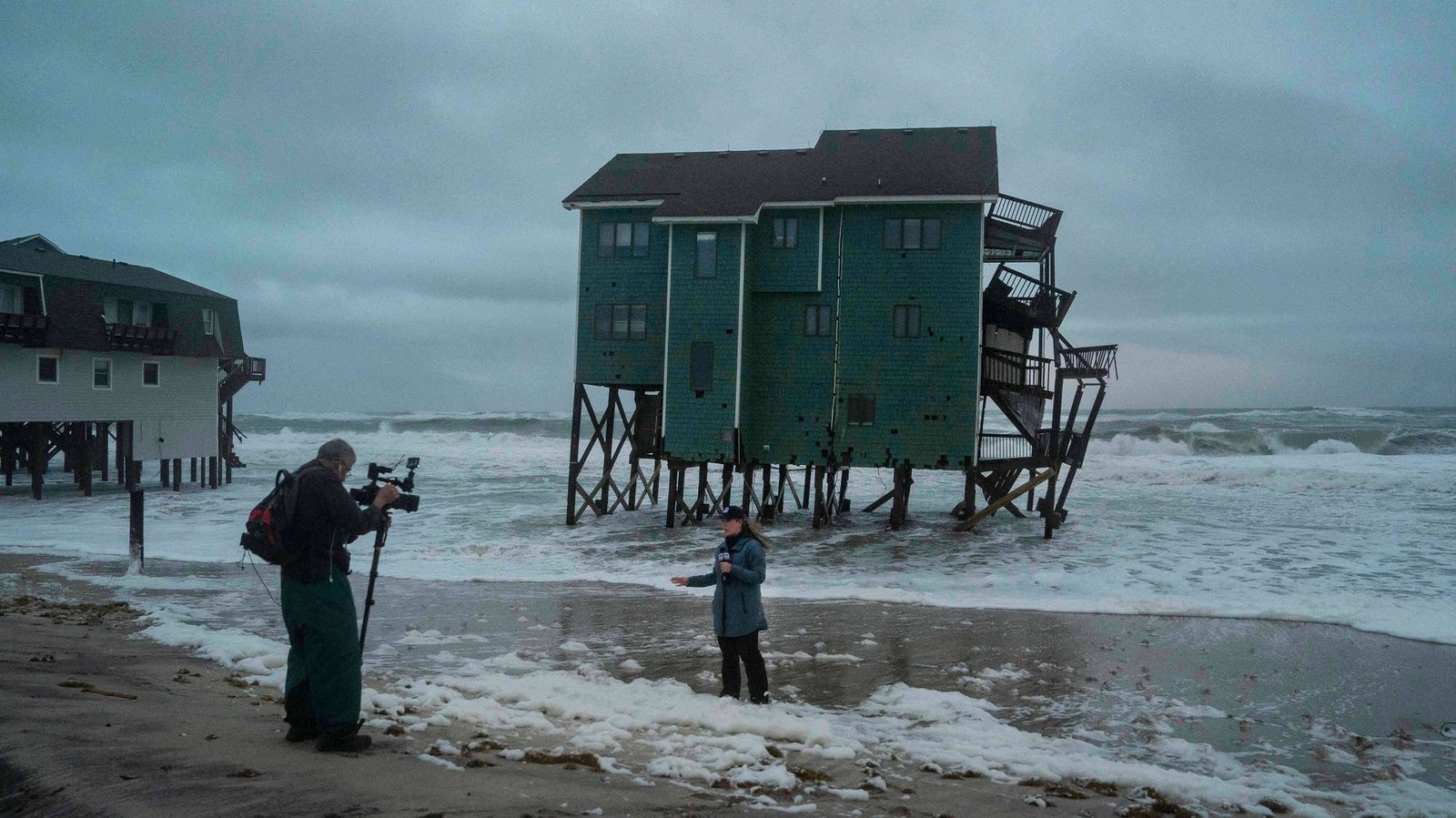
New Jersey declares a state of emergency as Easter approaches
A nor’easter storm made its way up the East Coast on Sunday, washing out roads and delaying air travel as densely populated areas of the Northeast braced for heavy rain, high winds and coastal flooding.
“The biggest impacts will be the potential for coastal flooding, especially in areas from northeastern North Carolina northward to most of coastal New Jersey,” said meteorologist Bob Oravec of the National Weather Service in College Park, Maryland.
Heavy rain was also expected in southeastern New England and the New York City area, with some falling in coastal parts farther up the coast, Oravec said.
In North Carolina’s Outer Banks, an area that has seen significant storm damage this season, ocean swells began to appear across Interstate 12 at a hotel near Paxton, the Dare County Sheriff’s Office posted online Sunday. The office urged travelers to be cautious and to put property owners on alert as high tide approaches.
The waves were heavy in the town of Buxton on Hatteras Island, where a number of beachfront homes fell into the water in recent weeks. One house was losing its supports on Sunday and appeared on the verge of collapse.
“The waves are hitting the houses and the dunes so hard, they’re all eroding,” said Robert Sploun, who was monitoring the situation on the beach.
Emergency Services Director Brandon Ellis told the Post and Courier on Sunday that flooding was widespread along the coast in Georgetown County, South Carolina, where several motorists had to be rescued when their cars were submerged by rising waters.
Parts of the county received up to seven inches (18 cm) of rain, the weather service said.
Further south in Charleston, South Carolina, several downtown streets were closed due to flooding. Homeowner David Graubner spent the weekend pumping out his property, hoping to avoid a repeat of what happened Friday, when high tide brought nearly a foot (0.3 meters) of water into his garage, where his new Corvette was parked.
"And I got all my toys in the garage and tools and stuff. So whatever helps. “Even lowering the water by a few inches makes a difference,” Graubner told WCIV-TV.
Several roads were closed in Myrtle Beach, South Carolina, as heavy rains overwhelmed that city’s stormwater system.
“Please be safe and stay home, if possible,” Myrtle Beach officials posted on Facebook.
The entire state of New Jersey has been under a state of emergency since Saturday night. It is expected to continue through Monday, allowing state emergency services personnel to be activated as necessary. On Long Island, Nassau County Executive Bruce Blackman declared a state of emergency on Sunday due to the possibility of high ocean waves pushing water into bays and waterways.
Parts of the state are expected to experience moderate to major coastal flooding, inland flash flooding, winds of up to 60 mph (97 km/h), up to 5 inches (about 13 cm) of rain and high waves, which may cause beach erosion. Some volunteers were placing sandbags on the beaches.
The National Weather Service placed New York City, Long Island and southern Westchester County under a coastal flood warning and wind advisory until at least Monday afternoon. The weather service said coastal areas on Long Island’s outskirts could see flooding, with up to 3 inches (about 8 cm) of rain and high winds.
Wind gusts of more than 30 mph (48 km/h) were already recorded in the area Sunday morning.
Utilities in the area added more than 1,600 workers to respond to the storm.
“With warnings of high winds and flood risks, staying alert and vigilant and taking steps to prepare is critical for everyone’s safety,” New York Governor Kathy Hochul said in a statement.
Some flight delays and cancellations were announced at airports from Washington, D.C., to Boston.
The storm is expected to move in by Monday night.
Also on Sunday, high wind warnings remained in effect for parts of Alaska, as the remnants of Typhoon Halong continued to move toward the state’s west coast. The storm was moving further east than previously expected, pushing the strongest winds inland and reducing the risk of record-high water levels in Norton Sound, according to the National Weather Service.













Post Comment